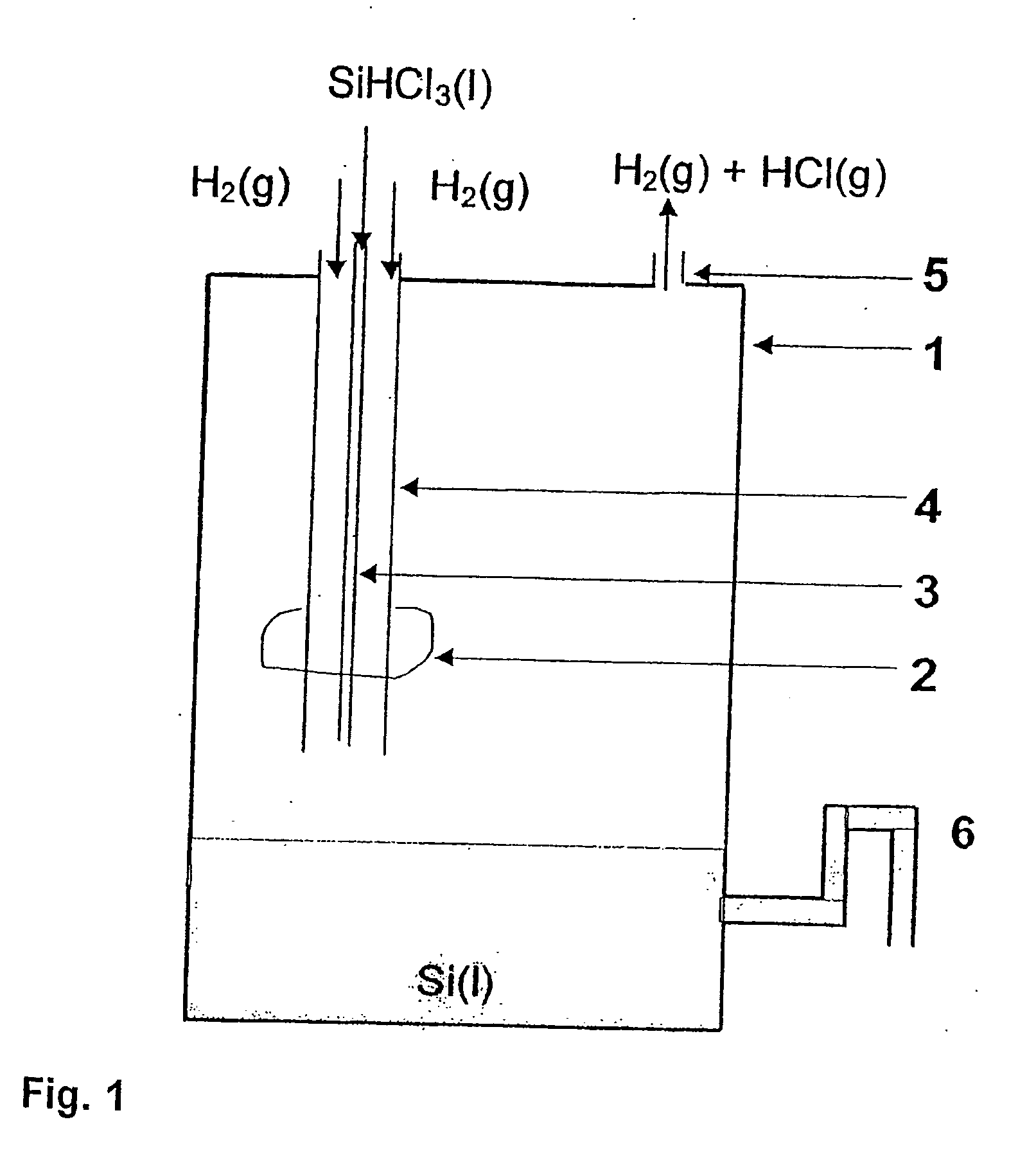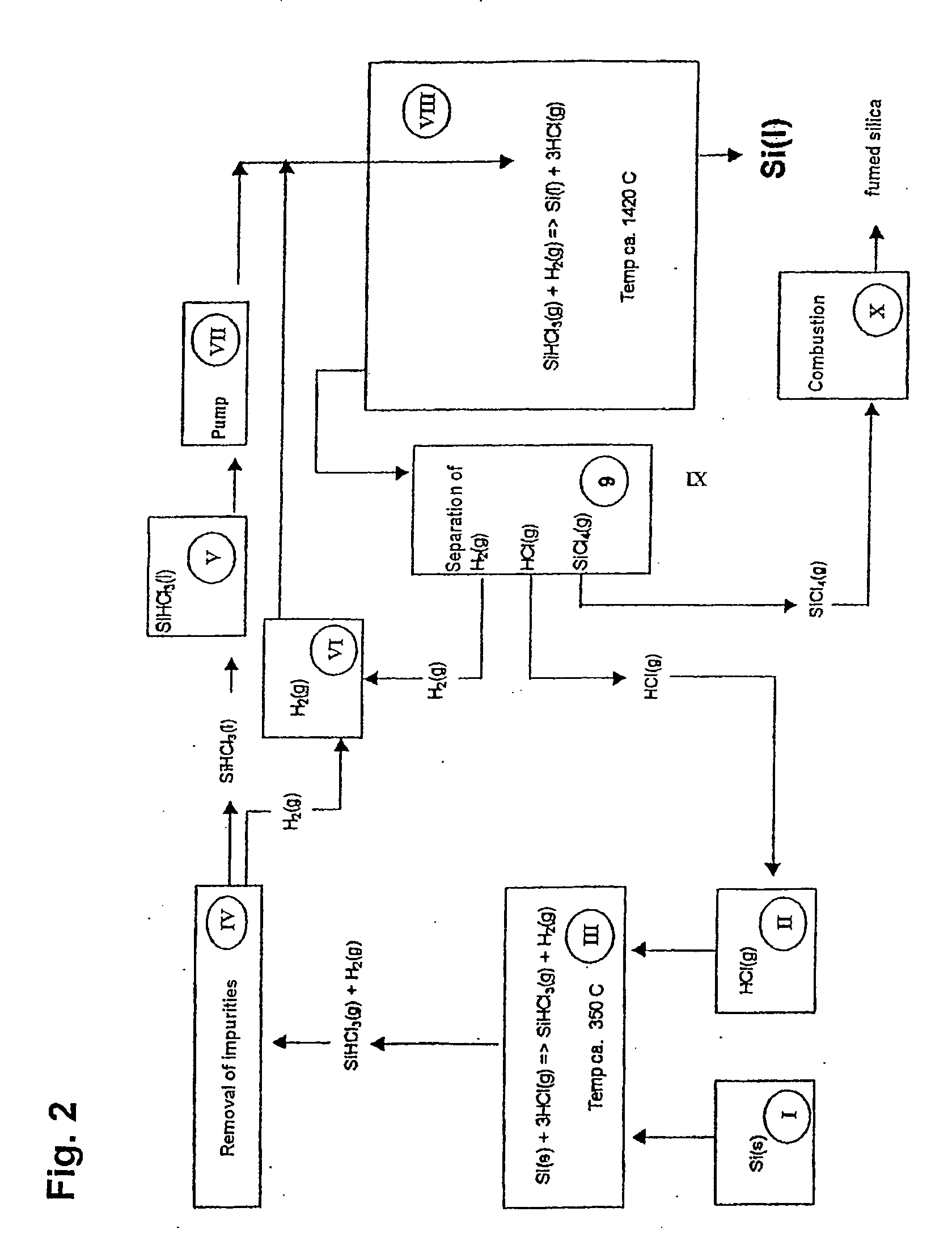Production of high grade silicon, reactor, particle recapture tower and use of the aforementioned
a high-grade silicon, reactor technology, applied in the direction of silicon compounds, crystal growth processes, chemical/physical/physico-chemical processes, etc., can solve the problems of premature decomposition of silicon precursors, 166 lack of a constant level of molten silicon, and greater formation of bi-products in the hot reaction zon
- Summary
- Abstract
- Description
- Claims
- Application Information
AI Technical Summary
Problems solved by technology
Method used
Image
Examples
example 1
[0054] A vertical reactor was utilized with a closed bottom, a height of 85 cm, an inner diameter of 4.5 cm, and an established temperature gradient as depicted in the graph in FIG. 4.
[0055] The reactor was supplied with a feed system consisting of an inner steel pipe with a diameter of 0.25 mm, place inside an outer steel pipe with an inner diameter of 2.18 mm. SiHCl3 was introduced using a high pressure pump (0.2 ml / min) equivalent to about 50 ml / min gas at STP. Hydrogen gas was introduced through the outer pipe at a rate of 50 ml / min. The lowest theoretical H2:SiHCl3 ratio possible was used, in order to indicate the lowest possible cooling is effect from the hydrogen gas introduced. The purpose of this experiment was therefore not to achieve the highest possible conversion of introduced trichlorosilane.
[0056] The most significant result from this experiment which ran for three hours, was that there was no signs of fouling in the feed system. As expected, a lover conversion of S...
example 2
[0059] In order to suppress the formation of tetrachlorosilane (SiCl4), it is necessary to use an excess of hydrogen. The effect of the H2:SiHCl3 ration was investigated in a series of experiments with the ratios 1.1:1, 3.1:1 and 6.3:1. In this series, the concentration of SiCl4 in the off gas decreases from 19% to 2%. The results are presented in FIG. 6.
PUM
| Property | Measurement | Unit |
|---|---|---|
| temperature | aaaaa | aaaaa |
| melting point | aaaaa | aaaaa |
| inner diameter | aaaaa | aaaaa |
Abstract
Description
Claims
Application Information
 Login to View More
Login to View More - R&D
- Intellectual Property
- Life Sciences
- Materials
- Tech Scout
- Unparalleled Data Quality
- Higher Quality Content
- 60% Fewer Hallucinations
Browse by: Latest US Patents, China's latest patents, Technical Efficacy Thesaurus, Application Domain, Technology Topic, Popular Technical Reports.
© 2025 PatSnap. All rights reserved.Legal|Privacy policy|Modern Slavery Act Transparency Statement|Sitemap|About US| Contact US: help@patsnap.com



